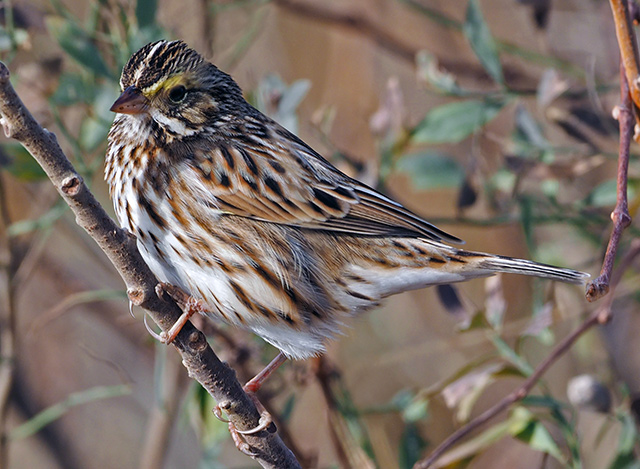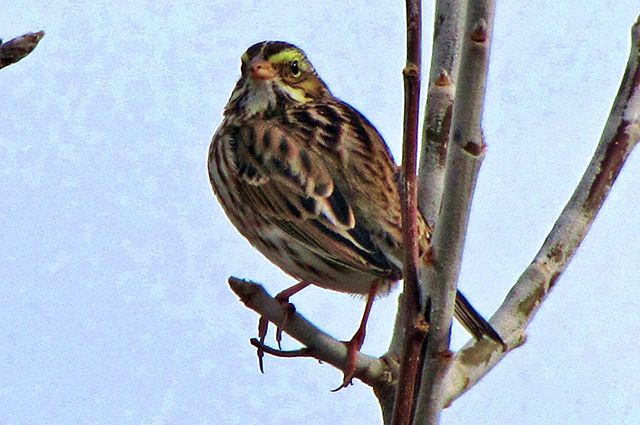|
|
| Photos
above © Judy Gallagher; Chincoteague National Wildlife Refuge, Chincoteague, Virginia; December 2017 Photos below © Gary Myers Text by Ellen Katinas |
|
|
|
Savannah Sparrow If they wanted to, Savannah Sparrows could work as the stealth operatives of the sparrow world. They are so inconspicuous that they are easily overlooked. Brown above and white below, streaked with crisp stripes of black and brown, the little birds are attractive but not distinctive. The easiest way to identify them is to look for the yellow spot in front of each eye. Named for a 19th century specimen collected in Savannah, Georgia, the sparrows are actually found throughout North America. During the summer, their breeding season, they spread throughout Canada, Alaska, and the northern United States. Winter finds them moving south. They may go as far as Mexico. The female lays 2 to 6 eggs at a time and must collect 10 times her weight in food to feed herself and her young during each day they spend in the nest. Luckily, they are not picky about what they eat. The sparrows devour spiders whole and eat the frothy, spit-like, white foam found on goldenrod plants (they’re after the young spittlebugs that live inside). Savannah Sparrows show strong attachment to the area where they hatched, be it meadow, pasture, or cultivated field, often returning each year to build their own nests. Males declaring their territory at the start of breeding season sing loud, buzzy songs from atop trees or fenceposts. These resemble the noises made by some insects. The Savannah Sparrow is susceptible to crop pesticides, which he may accidentally eat while foraging in cornfields. The birds’ population declined between 1965 and 2014.
|







